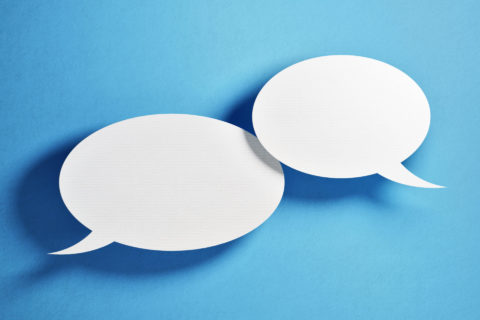How can brands leverage signature experiences to drive growth as global trends shift towards an experience-based economy?
I run for beer.
For runners, completing a marathon is such an elevating achievement after months of tough training. Sports brands have historically focused on solving the tensions around the ultimate running shoe and high-performance apparel. All this helps, but the real challenge is getting out of bed on a cold winter morning, especially if you are training alone. New Balance recognised what runners need is more support and camaraderie[i]. As the headline sponsor of the London Marathon, New Balance opened the “Runaway Pub”. When runners joined the Strava challenges designed around key marathon training milestones, they could exchange their miles for pints in the pub. Brilliant!
New Balance understood that a runner’s needs go beyond shoes or apparel. The “Runaway Pub” represents an experience that connects with the desire to share achievements, the motivation of reward, and the galvanising power of a running community. In the end, more than 23,000 runners – over half the number of runners in the London Marathon – participated, running more than 532,00 miles in pursuit of a beer. And the industry press took notice, generating 30 million impressions for New Balance.
Why embrace experience-led innovations?
We find ourselves in an evolving environment where incremental product and service features no longer guarantee long term differentiation and growth. Brands must look at alternative ways to deliver value that connects with their consumers to trigger growth. In this context, experience increasingly drives competitive advantage. When it is firmly integrated into the brand’s positioning with a deep understanding of what matters to people and their desires, it offers the promise of truly disruptive growth through innovation. This is the experience economy.
The power of experience is not new. In 1970 Alvin Toffler[ii] predicted that we would move away from an economy driven by ownership to one driven by the provision of “psychic gratification” (things that give us pleasure). Pine and Gilmore later wrote that “as services increasingly become commoditized themselves, more and more businesses will explicitly charge for the memorable encounters they stage, and thereby enter the new experience economy”[iii] and “future economic growth lies in the value of experiences and transformations, good and services are no longer enough”[iv]. In short, people are happier when spending money on experiences than things.
The power of experience is not limited to specific demographics. Once we have satisfied a threshold of material needs, memorable experiences trump material possession. As Van Boven and Gilovich[v] found when they compared significant material purchases, experiential purchases contribute more to a sense happiness in life. It is “money well spent“. Regardless age, gender, race, income, marital status, or geographic locations, memorable experiences endure.
Two decades later, this still holds true. With the power of experience being creatively re-interpreted in the context of emerging trends across sectors[vi]. In beauty, Lilah B’s pebble shaped compact is designed to have a more organic, tactile experience. In travel, Runcation will hook you up with a running adventure of your choice, designed for runners by runners.
With every new example, experience resonates with that which makes us human and happy. The intrinsic value of experience is about the joy it brings in the moment, especially when shared, and the power to create lasting positive memories.
The power of experience
To win at experience, brands need to go beyond just being in the right place at the right time. New Balance did just that.
Experiences matter most when they are personal and meaningful. Brands that successfully innovate around experience recognise this; they place the person at the centre of their innovation thinking, step into their consumer’s world to understand what they value, what motivates them, how they spend their time and what memories they treasure.
Experience innovation shifts away from creating new products and services to creating and delivering holistic experiences that are both memorable and differentiating.
Brands create signature experiences when they succeed in associating an experience laced with positive emotions to the brand. Our memory of experiences, especially those with emotional significance, creates a wide and holistic network of neural associations. When brands associate themselves with experiences, they have a greater opportunity to build positive brand associations that endure over time and trigger long term brand growth.
When brands associate themselves with experiences, they have a greater opportunity to build positive brand associations that endure over time and trigger long term brand growth.
How do you create signature experiences?
How can brands go about leveraging the power of experience, as New Balance successfully did through their “Runaway Pub”? Here are our guidelines for creating and delivering signature experiences.
- Be clear on how the experience expresses the brand purpose: this helps when (a) deciding what in the broader ecosystem would best align with the brand, and (b) connecting to the bigger experience.
- Reinforce existing connections with the brand in the ecosystem: for instance, connections with other values, attitudes and activities. Brands can reinforce such connections by creating a meaningful experience that delivers value.
- Build on the halo effect associated with the bigger experience: Consumers love happy and positive experiences that become memorable ones, and brands can benefit from the halo effect of the positive emotions associated with these experiences.
- Deliver a personalised connection across the ecosystem to create positive brand experience: It is more than connecting the brand to the experience, the brand needs to contribute to the experience.
- Create opportunities to share: Many people love to share their experiences with others, and this provides brands with an opportunity to spread advocacy. The experience should be share-worthy, and easy to share across digital platforms.
Brands have an opportunity to drive growth in more complex, borderless environments where major shifts in values and market forces have created a dynamic where goods and services are no longer core value drivers. Creating signature experiences opens a myriad of possibilities for brands to drive growth.
References:
[i] New Balance: The Runaway Pub, WARC, Feb 2020. (https://www.warc.com/SubscriberContent/article/jaychiat/new-balance-the-runaway-pub/129170)
[ii] Toffler, A., (1970). Future Shock. Random House
[iii] Pine, B.J. & Gilmore, J.H. (1998). Welcome to the experience economy. Harvard Business Review, Jul/Aug. (https://hbr.org/1998/07/welcome-to-the-experience-economy)
[iv] Pine, B.J. & Gilmore, J.H. (1999). The Experience Economy: Work Is Theatre & Every Business a Stage. Harvard Business School Press.
[v] Van Boven, L., & Gilovich, T. (2003). To do or to have? That is the question. Journal of Personality and Social Psychology, 85(6), 1193–1202
[vi] Safian-Demers, E., (2019). The Future 100. JWT Innovation Group


